Explore the 18 Vegetables That Start With J
Welcome to the wonderful world of vegetables that start with the letter J! These juicy, jazzy veggies may not be as common as their counterparts in the vegetable kingdom, but they sure do pack a flavorful punch. From the sweet and crunchy jicama to the earthy and versatile Jerusalem artichoke, we’re about to embark on a journey that will introduce you to some of the most underrated, yet utterly delightful, vegetables out there.
1. Jicama
The crisp and reviving root vegetable is known as jicama, or Pachyrhizus erosus. It is indigenous to Mexico and has been grown there for many years. This plant is closely related to beans and peas and is a member of the Fabaceae family of legumes. Jicama is very popular and adaptable, as seen by the many nicknames it has acquired. Some nicknames include Mexican yam bean, Mexican turnip, and Chinese turnip.
Jicama is frequently served in Mexican food as a light snack after being peeled and chopped into thin strips. For an extra spicy flavor, chili powder and lime juice are frequently sprinkled on top. Additionally, it is a crucial ingredient in recipes like ceviche, where its sharpness accentuates the sensitive texture of the fish. Jicama can also be found in fruit salads, adding a delightful crunch and sweetness to the mix.
Outside of Mexico, jicama is used in various culinary applications. In Southeast Asia, it’s a popular addition to salads and spring rolls, enhancing their texture and flavor. In the United States, it’s sliced into sticks and served with dips as a healthy alternative to chips. Furthermore, jicama can be julienned or grated to add a unique crunch to coleslaw or slaw-style salads.
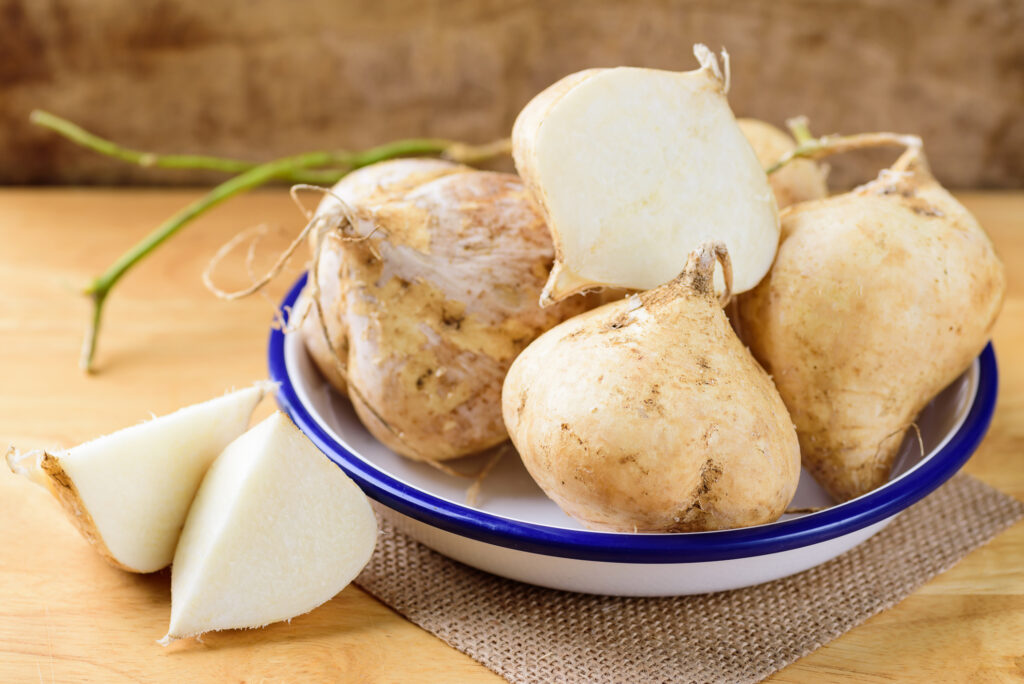
©Nungning20/iStock via Getty Images
2. Jerusalem Artichoke
The Jerusalem artichoke, scientifically known as Helianthus tuberosus, is a unique and lesser-known vegetable with a fascinating history. Contrary to its name, it is neither from Jerusalem nor an artichoke. It is rather a member of the sunflower family, Asteraceae. This knobby, tuberous root vegetable is native to North America, specifically the eastern regions of the United States. Native American tribes, including the Cherokee and the Delaware, were among the first to cultivate and consume Jerusalem artichokes.
Jerusalem artichokes have a distinctive nutty and slightly sweet flavor, with a texture akin to that of a potato. Roasting Jerusalem artichokes with olive oil, garlic, and herbs is another delightful option, resulting in crispy and caramelized edges that enhance their natural flavor. Additionally, they can be thinly sliced and added to salads for a crunchy texture or grated and incorporated into fritters or latkes.
Jerusalem artichokes’ versatility extends to pickling, as they absorb flavors beautifully, making them an intriguing addition to charcuterie boards. They can also be used as a unique pizza topping when sliced thin and paired with cheese and herbs.
Despite their culinary appeal, it’s essential to note that Jerusalem artichokes can be invasive when grown in gardens due to their rapid spread. They are best suited to large, dedicated growing areas or contained garden beds to prevent them from taking over.
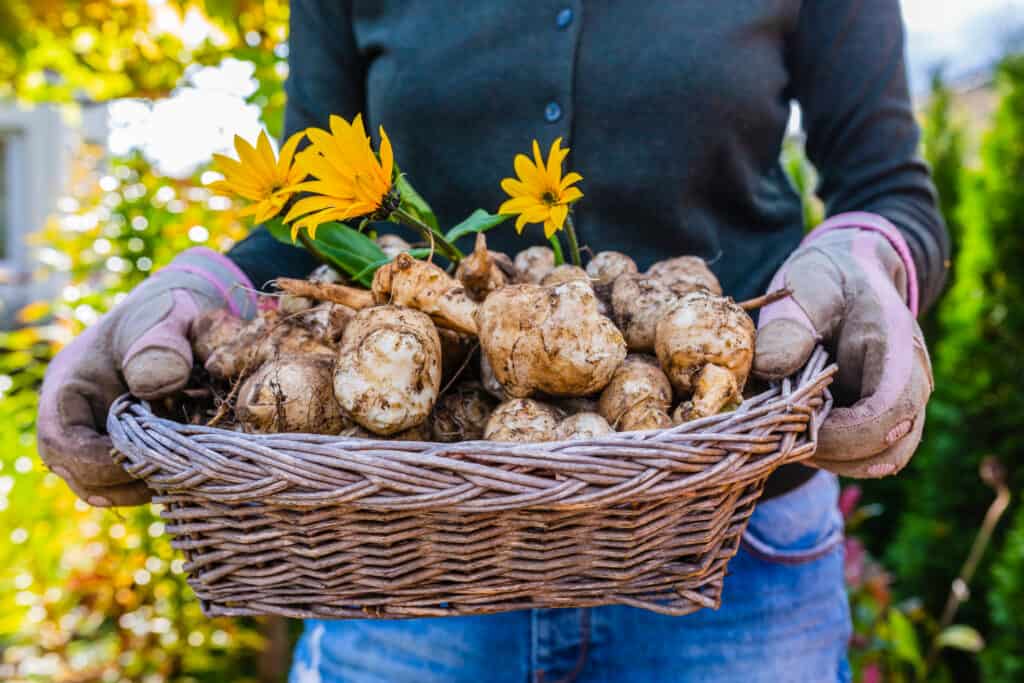
©iMarzi/Shutterstock.com
3. Japanese Sweet Potato
The Japanese sweet potato, scientifically classified as Ipomoea batatas, is a popular and cherished variety of sweet potato. It is cultivated primarily in Japan, although it’s also grown in other parts of Asia. This unique type of sweet potato is distinguished by its vivid purple skin and delicious, creamy, whitish flesh. Despite its name, it is not a Japanese specialty, but it has assimilated into Japanese cuisine.
Originally native to Central and South America, sweet potatoes were brought to Asia by Portuguese traders in the 16th century. It has been said that Japanese sweet potatoes were introduced to Japan during the Edo period. They became a staple crop as a result of their gradual climatic adaptation to Japan.
These sweet potatoes are used in a range of sweet and savory Japanese cuisines. The most often used methods of preparation for them include roasting or baking. Cooking enhances the inherent sweetness of Japanese sweet potatoes, giving them a delicious caramelized taste and a soft, supple texture. They are frequently offered as street food and are roasted at outdoor marketplaces.
Japanese sweet potatoes are also used in traditional Japanese desserts. They are frequently incorporated into wagashi, which are Japanese sweets. For instance, you can find them as fillings in dorayaki (a type of sweet pancake sandwich) or as ingredients in traditional wagashi confections like daifuku and yaki-imo manju.
In savory dishes like tempura, which consists of battered and deep-fried thinly sliced or cubed sweet potatoes with a sweet, soft core, sweet potatoes are utilized throughout Japan. They may also be used to give curries, stir-fries, and soups a particular sweetness and creaminess.

©Sorin85Banica/Shutterstock.com
4. Jalapeño Pepper
Capsicum annuum is the scientific name for jalapeño peppers, which are a well-liked kind of chili pepper known for its mild heat and vibrant green color while fresh, becoming red as they ripen. These peppers are indigenous to Mexico and have long been cultivated and utilized in Mexican cuisine. Because of their distinct flavor and hot sting, they are now well-known on a global scale.
Jalapeños provide a balance between heat and a moderate, somewhat sweet undertone in terms of flavor. They are a kind of nightshade plant that is a member of the Solanaceae family. This family also contains the bell pepper and the chili pepper, two more well-known peppers.
Jalapeños are used in many other cuisines outside of Mexican food. They can be pickled and served as a sour side dish that is frequently paired with sandwiches and burgers. Slices of fresh or pickled jalapeños give pizza, salads, and even sushi rolls a spicy flavor.
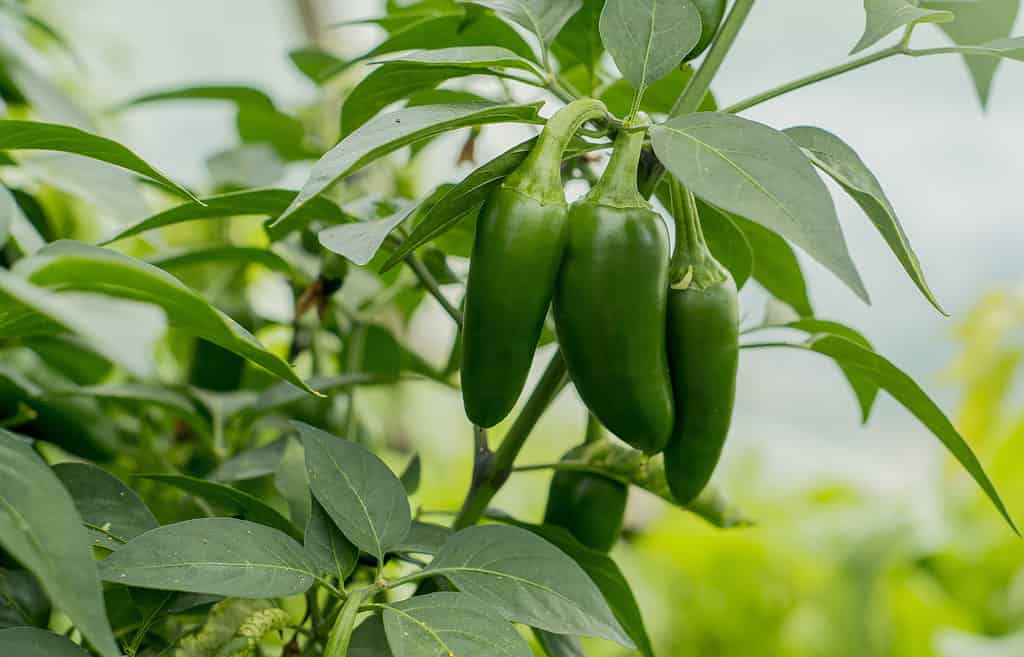
©Gatis Grinbergs/Shutterstock.com
5. Japanese Eggplant
Japanese eggplant is a long, thin vegetable that is a variety of the common eggplant. Its scientific name is Solanum melongena var. esculentum. Contrary to its name, this plant is widely cultivated and adored in a variety of cuisines across the world, not just in Japan. Due to its mild, somewhat sweet flavor and delicate, edible skin, this specific type of eggplant is a versatile ingredient in many cuisines.
In areas of India, Myanmar, and Thailand as well as other countries in Southeast Asia, Japanese eggplant has a long history of cultivation. Its elongated shape and thinner skin set it apart from the larger and rounder typical eggplant, allowing for a range of culinary applications.
In many Japanese cuisines, Japanese eggplant is a prominent ingredient. Nasu Dengaku is a traditional method that involves halving the eggplant, brushing it with a miso glaze, and then broiling it until it is soft and somewhat browned. This umami-rich, salty dish is frequently served as an appetizer.
Agedashi Tofu, a popular Japanese dish made with this eggplant, blends deep-fried tofu with thinly sliced Japanese eggplant in a delicious dashi-based sauce. The flavorful soup is absorbed by the eggplant, giving the dish depth.
Japanese eggplant is utilized in a variety of Asian and foreign dishes outside of Japan. It may be stir-fried with soy sauce and garlic for an easy-to-make but delectable side meal. It is frequently used in recipes like ratatouille or grilled and served with olive oil and herbs in Mediterranean cuisine. Japanese eggplant may also be sliced, grilled, and used as a pizza topping, giving the pie a distinctive texture and flavor.
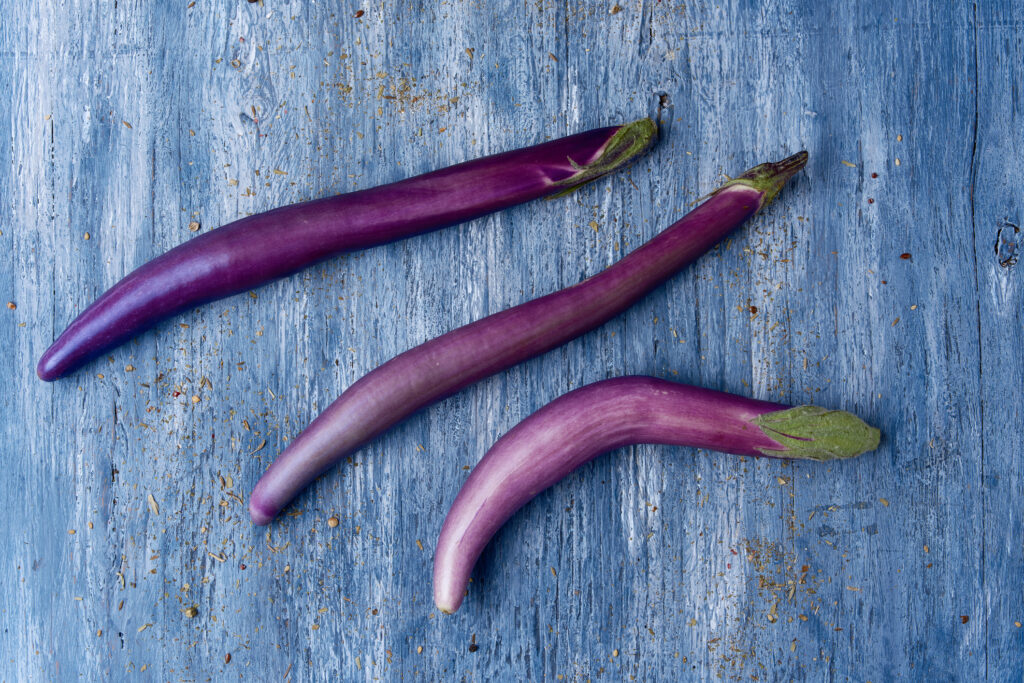
©nito100/iStock via Getty Images
6. Japanese Pumpkin
The unusual and well-liked squash cultivar known as the Japanese pumpkin, scientifically known as Cucurbita maxima, comes from Central and South America. Despite its name, it is not just used in Japanese cuisine and has become more and more well-known elsewhere. This pumpkin, known as “kabocha” in Japan, stands out for its vibrant orange flesh and thick, bumpy, green skin.
Mesoamerica is where the Japanese pumpkin’s domestication and cultivation began. It was introduced to Japan during the beginning of the Edo era, and since then, it has been a staple of Japanese cuisine.
Japanese pumpkin’s sweet and nutty flavor as well as its rich, velvety texture make it a versatile ingredient in a variety of cuisines. In the Japanese cuisine known as tempura, slices of kabocha are battered and deep-fried to produce a crispy and delicious delicacy. The simmered meal kabocha nimono, which has the pumpkin cooked in a delicious broth with soy sauce, mirin, and sugar, is another well-known Japanese recipe.
Beyond Japan, Japanese pumpkin is appreciated in international cuisines as well. In Southeast Asia, it’s used in curries, providing a rich and creamy element to the dish. In the United States, it’s commonly used in soups, pies, and roasted vegetable medleys. Its natural sweetness also makes it a great candidate for purees and baby food.
Japanese pumpkin is well-known for its nutritional worth since it is full of fiber, antioxidants, and vitamins, especially vitamins A and C. Because of this, it makes a delightful complement to meals and a sensible decision from a health standpoint.
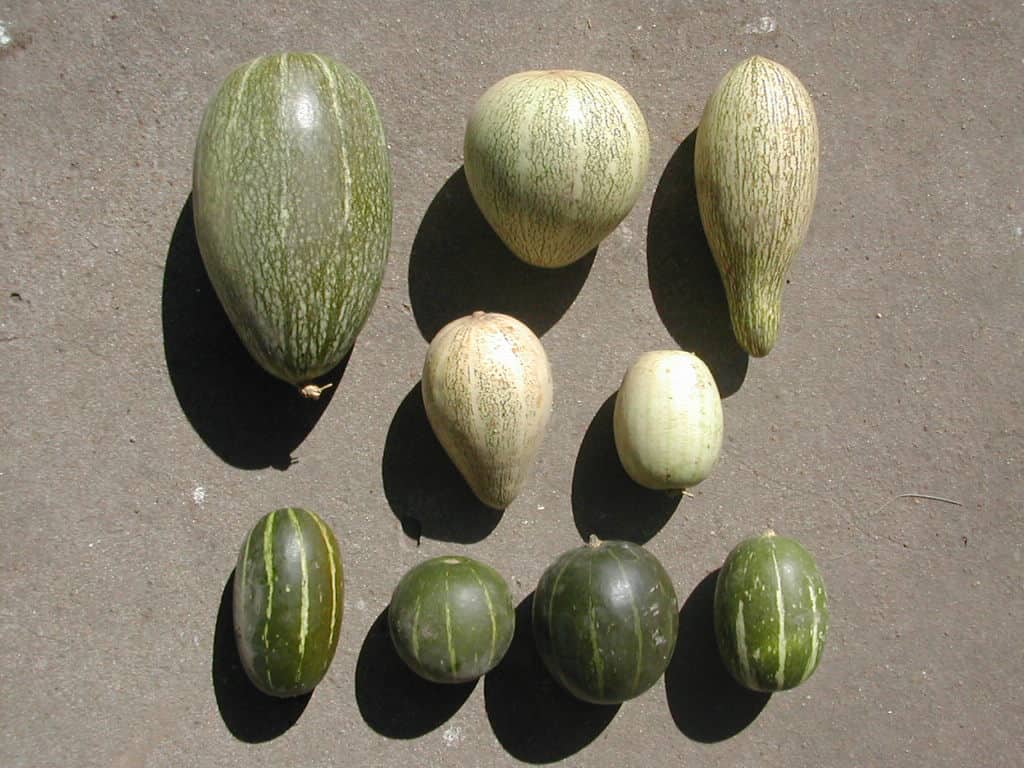
©Fernando Lopez-Anido, CC BY-SA 3.0 – License
7. Jute Leaf
The Corchorus olitorius, often known as jute leaf, is a well-liked and nutrient-rich leafy green that is grown all over the world. The leaves of the jute plant are mostly utilized in the textile industry, but they have also been employed in regional cuisine, particularly in Africa and some parts of Asia. This plant belongs to the Malvaceae family and is native to the Indian subcontinent.
Jute leaves have a texture that is somewhat mucilaginous when cooked, comparable to okra, and are distinguished by their dark green hue. They go well with a range of foods and spices because of their mellow, earthy flavor. “Lalo,” a classic Senegalese stew, is one of the most popular foods cooked with jute leaves. In Lalo, the leaves are simmered with a blend of ingredients like groundnuts, tomatoes, and spices, creating a hearty and nutritious meal when served with rice or millet.
In Nigeria, jute leaves are known as “ewedu” and are a key component of a popular soup called ewedu soup. The leaves are blended into a slimy consistency and served as a side dish alongside dishes like pounded yam or amala.
Many Asian cuisines also employ jute leaves. For example, they are used in India to provide flavor and nutrients to a variety of curries and dals. In Bangladesh, jute leaves are incorporated into traditional dishes like “chorchori,” a stir-fry with mixed vegetables and spices.
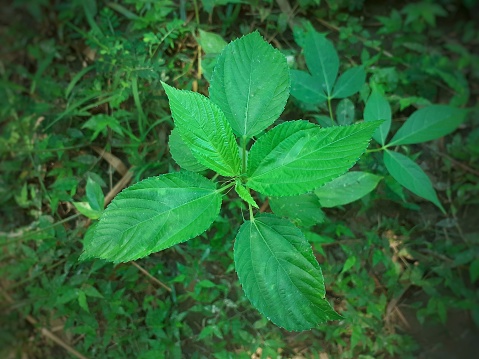
©John Sarkar/iStock via Getty Images
Summary of Vegetables That Start With J + More
| 1 | Jicama |
| 2 | Jerusalem Artichoke |
| 3 | Japanese Sweet Potato |
| 4 | Jalapeño Pepper |
| 5 | Japanese Eggplant |
| 6 | Japanese Pumpkin |
| 7 | Jute Leaf |
| 8 | Jacket Potato |
| 9 | Job’s Tears |
| 10 | Jagung |
| 11 | Japanese Scallion |
| 12 | Jinenjo |
| 13 | Jewel Yam |
| 14 | Jericho Lettuce |
| 15 | Japanese Mustard Spinach |
| 16 | Japanese Radish |
| 17 | Junsai |
| 18 | Jute Mallow |









